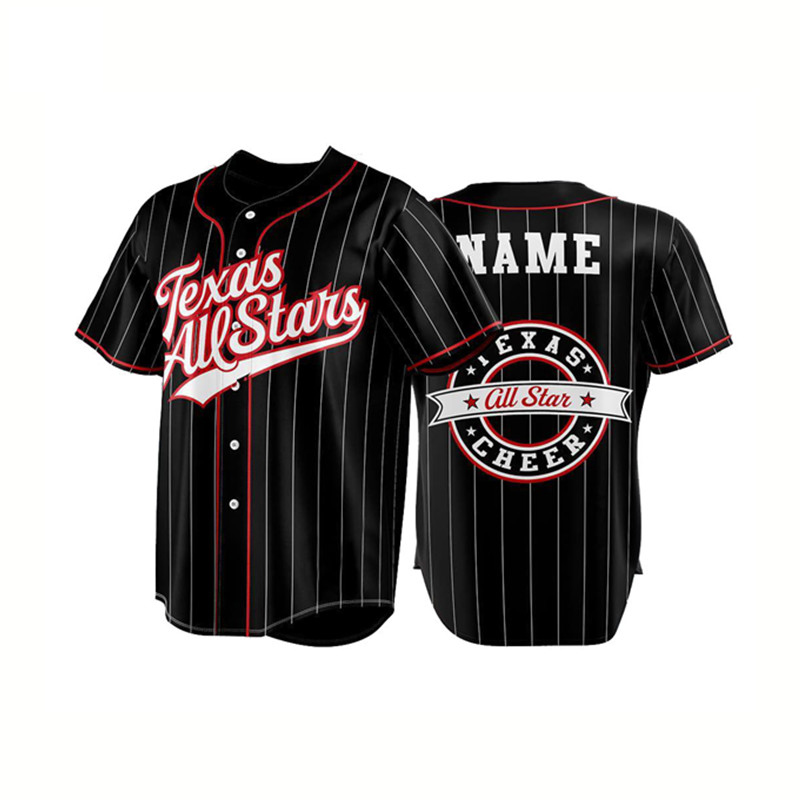T-shirts are a staple in most people’s wardrobes, and they have become a popular canvas for designers to express their creativity. T-shirt design is an art form that has gained popularity over the years, and with the right guidance, anyone can create a unique and eye-catching design. In this blog post, we will provide a complete guide to t-shirt design, covering everything from choosing the right t-shirt material to designing graphics and selecting colors. Whether you’re a graphic designer or just looking to create a one-of-a-kind t-shirt for your business or personal use, this guide will give you the tools and knowledge you need to create a successful t-shirt design.
- Identify why you need a shirt.
Designing a t-shirt involves more than just choosing a color or adding a graphic. It requires an understanding of branding and the message you want to communicate through your shirt. Whether you are creating a shirt for promotional purposes, internal company usage, merchandise, or event souvenirs, you want to ensure that your design is effective in conveying your brand themes.
To start, make a list of the key themes, styles, and personality traits that you want your brand and shirts to convey. Consider whether your brand is playful or serious, edgy or conservative, luxurious or affordable. This will help you create a focused t-shirt design that answers these questions at a glance.
It’s important to move away from personal preference and rely more on real, quantifiable data. Who are your target clients or customers? What brand traits do they want to do business with? This will help you understand why you need a shirt and what you want it to do.
There are four goals to guide your t-shirt design process, depending on the purpose of your shirt.
If it’s for promotional gifts, you want to keep your brand in the minds of prospective clients and customers. If it’s for internal company use, branding is still important, but solidarity and appreciation may also be goals. If you’re creating merchandise, you need to factor in style, marketability, and business strategy. And for event souvenirs, you want to create a casual, less restrictive design that still conveys your brand themes.
No matter the purpose of your shirt, branding is essential. Include your brand logo so that observers know who made the shirt if they want something similar. Your logo should have a strong, even dominant, presence on the shirt.
Apply the same design quality and cleverness as you would to a billboard advertisement. Remember, t-shirts provide exposure every time a person wears them in public, so make sure your design is eye-catching and memorable.
Once you’ve determined your goals, you can prioritize the different aspects of your t-shirt design. Fashion might be a high priority for merchandise tees, but not for employee gifts. Tailor your design to best suit your needs and ensure that it effectively communicates your brand’s themes.
- Set your spending limit and quantity.
Let’s talk about the two important factors that could make or break your t-shirt design: budget and quantity. While we understand your eagerness to dive into the creative process, let’s first get these details out of the way so that you can create an exceptional design that aligns with your resources.
The amount you’re willing to spend and the number of T-shirts you require will undoubtedly influence your design choices. One key factor to keep in mind is the number of colors you plan to use. Depending on your printing method, additional colors may rack up the bill. If you’re working with a tight budget, a simple solution is to minimize the number of colors you use, without compromising on the overall effect.
Similarly, the quantity of shirts you need will determine the most suitable printing method for you. If you’re looking for bulk printing, certain methods work better, while others may prove to be more costly for smaller orders.
So, before you let your creative juices flow, take the time to plan your budget and quantity smartly. Trust us, it’s a small effort that could make a huge impact on the end result!
- Understand your printing options.
Printing your own custom t-shirts is a fun and creative way to promote your brand, commemorate an event, or express your personal style. But with so many printing options available, how do you choose the best one for your needs? Don’t worry, we’ve got you covered! Let’s dive into the most popular T-shirt printing methods and their pros and cons.
Screen printing, the gold standard of t-shirt printing, is a reliable and affordable option for large orders over 20. Your design is transferred onto screens, one for each color, and then printed onto the fabric. The downside? A new screen is required for every new color or design revision, which can get pricey. Plus, colorful designs end up being more expensive.
Vinyl graphics, another heated transfer method, use durable vinyl instead of ink. It’s perfect when you want your design to stand out—quite literally! However, additional colors can drive up the cost, making it less ideal for large orders.
Direct-to-garment (DTG) printing is a newer option that allows for highly customizable designs with maximum detail and extensive color choices. However, it’s best suited for small batches or even a single sample, as it becomes less viable for larger quantities. Also, it doesn’t work well on dark-colored garments.
Now that you know the pros and cons of each printing method, you can choose the one that best suits your needs and budget. Let’s get printing!
- Come up with a design concept.
Are you ready to unleash your creativity and design the perfect t-shirt? Before you dive in, let’s explore some tips and tricks to help you make your design truly shine.
First, consider the type of T-shirt you want to use. Think about your audience and goals before choosing a style. A crop top may not be appropriate for a law firm’s promotional campaign. Also, make sure your design will translate well to different t-shirt sizes. A canvas size of 18”x18” will help you get the proportions right.
Now it’s time to get creative! Your design should communicate your brand’s message and appeal to your market. Take inspiration from Prim’s adorable dinosaur t-shirt design, perfect for a kid’s merchandise brand. Or, if you’re going for a more professional look, check out Alex Lalove’s winning design for Datafinity, featuring a fashionable twist on the classic business tee.
Remember, your design will be displayed on bodies of all shapes and sizes, so keep it simple and avoid intricate details. Choose a font that reflects your brand’s personality, but make sure it’s readable. And don’t forget about color! Use it to convey emotion and personality, but make sure your fabric and print colors complement each other.
When it comes to printing, there are different ink options to choose from, including standard Plastisol, shiny foil, glitter, and dimensional Hihighensity and Gegel inks. Talk to your printer about which option is best for your design.
With these tips in mind, let your creativity run wild and design a t-shirt that’s sure to turn heads and make a statement!
- Locate an artist.
Are you ready to create an awesome T-shirt design? Well, you have two options: take the DIY route or hire a professional designer. If you’re a design whiz, then you can save some cash by creating the design yourself. However, if you’re not confident in your design skills or simply don’t have the time to learn the technicalities, then a pro is the way to go.
Let’s be real: t-shirt design is more than just putting an image on a shirt. Professionals know all the ins and outs of creating a successful design, including the technical concerns of t-shirt design. If you’re not familiar with terms like CMYK, then it might be best to leave it to the experts.
Hiring a designer means you don’t have to spend hours learning marketing, branding, and graphic design. Instead, you can collaborate with a skilled freelancer who already has the knowledge and expertise to bring your vision to life. The key is to find a designer who understands your style and can think like you do. Look for someone with a personality that clicks with yours and a design style that matches what you’re looking for.
Once you’ve found your designer, it’s crucial to communicate your vision clearly. Share details about your design ideas, messaging, intended audience, colors, logos, visual style, t-shirt type, embroidery, and printing specifications. Provide examples of designs that inspire you and everything they need to know so they can create the perfect t-shirt design.
So whether you’re a design pro or need to bring in some help, creating an awesome t-shirt design is within reach. Let’s get started with us!
- Assess your design.
Congratulations! You’ve received some design options for your t-shirt! Now it’s time to evaluate them and select your favorites. But don’t forget about your marketing and technical requirements. Will your design work on a tank top? Is it within your budget in terms of color? And most importantly, does it convey the right message? Remember, this isn’t just an art contest; it’s a business decision.
Communicating your feedback to your designer is essential. Let them know what you like and what needs improvement so that they can create an even better set of options for you. It’s all about collaboration!
But don’t stop there. Get feedback from both key stakeholders and people who have no connection to your t-shirt design. Even your neighbor across the street could offer valuable insights. Ask them what message they get from the shirt and who they think it’s for. Their answers will help you determine if your t-shirt design is communicating what you want it to.
If you find that it’s not hitting the mark, don’t hesitate to go back to your designer and make changes. Remember, the ultimate goal is to create a t-shirt that resonates with your target audience and achieves your desired results. So take the time to evaluate and refine your design until it’s perfect!
- Ask your designer for the appropriate files.
Woohoo! You’ve got the perfect t-shirt design! But before you get too excited, double-check that you have all the right files from your designer. Trust us, you don’t want any surprises when it comes time to print.
Here’s what you’ll likely need:
- Your t-shirt is designed in vector formats, such as an Adobe Illustrator (AI), PDF, or EPS file. Make sure you have one for each different t-shirt design you plan to create.
- Color codes. If your printer offers custom colors, you’ll need the Pantone or CMYK color codes to ensure everything turns out just as you envision it.
These files and codes are crucial to ensure that your t-shirt design comes out looking amazing. So take the time to verify that you have everything you need before sending your files off to the printer.
- Get a fantastic printer.
Once you have your design ready, it’s time to find a printer who can turn your vision into a reality.
When looking for a printer, there are a few things to keep in mind. Make sure they have an in-house art department to ensure quality work. Request samples of finished shirts so you can see and touch the final product. Building a working relationship with a printer who offers pre-press proofs and prints six or more colors can be beneficial in the long run.
It’s important to beware of hidden charges, especially with screens, films, or Pantone color matching. Make sure you go over all the charges before payment to ensure transparency.
Designing a T-shirt can be an exciting and fun process, but it’s important to make sure you’re doing it right. Follow these tips to design the perfect t-shirt and find the right printer for your needs. Have any questions or comments? Let us know in the comments below!

